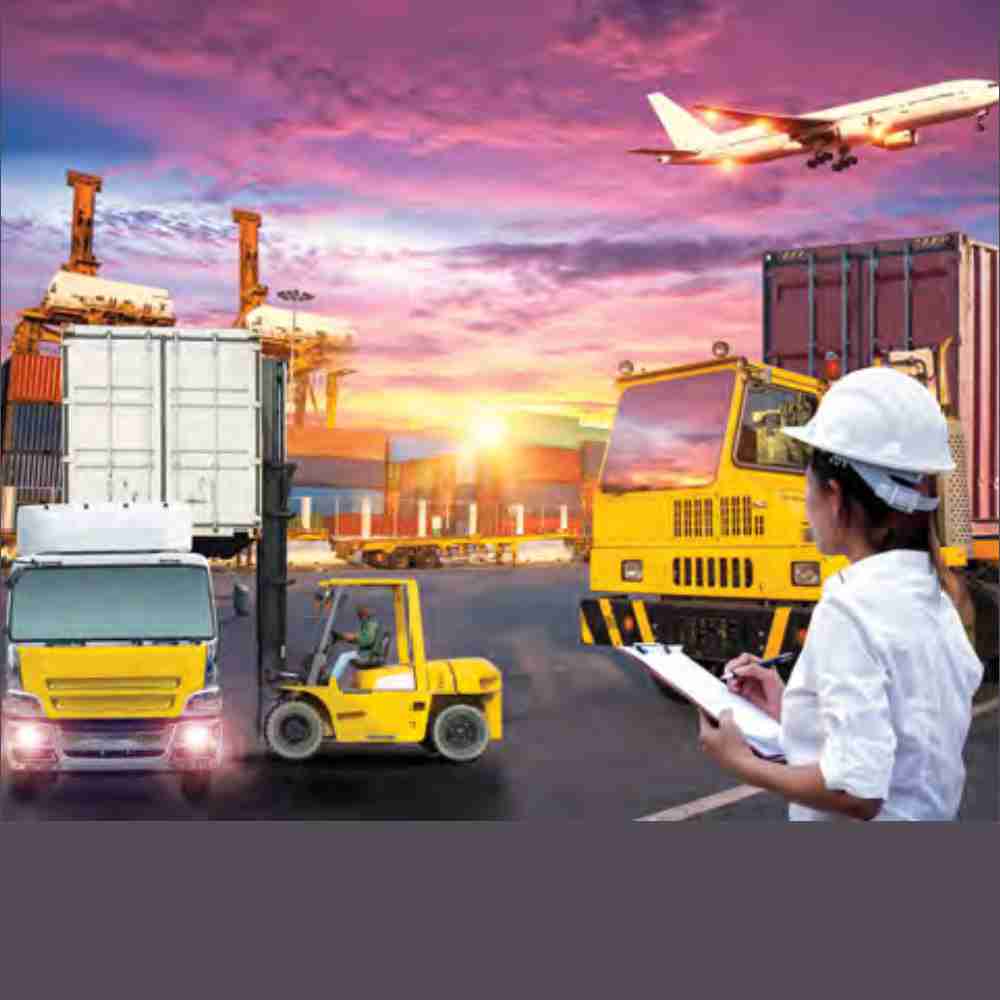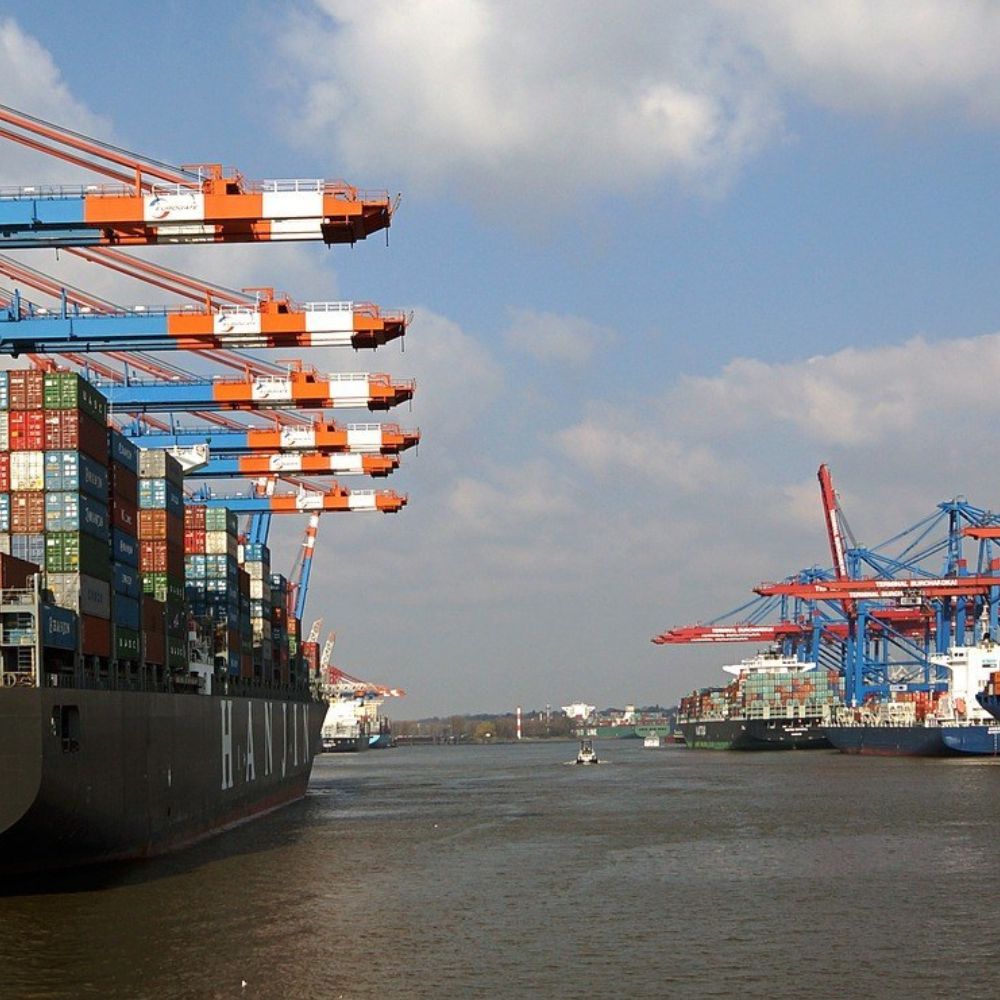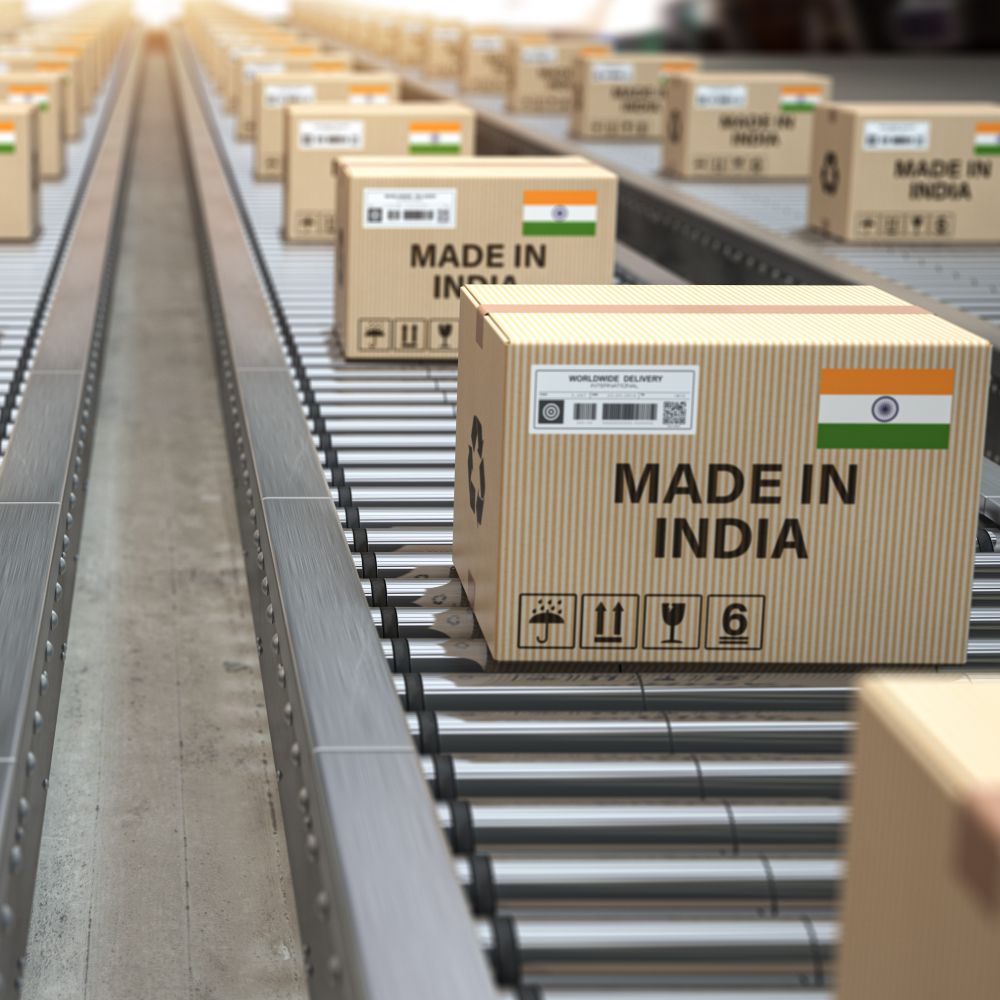With a view to support growth and steer the supply chain wheels in the right direction, the Central Government recently unveiled National Logistics Policy draft and invited suggestions and comments from the industry stakeholders to make it the most comprehensive policy document. Pitching for an all-inclusive growth, we reached out to the experts to share their expertise and experience on the much-awaited policy that will shape the course of the logistics industry in times to come. This is essentially an opinion piece brought together by veterans sharing their inputs for the long-awaited National Logistics Policy …
Logistics is currently valued at $160 Bn and is poised to hit $215 Bn by 2020-21, on back of development of logistical infrastructure such as dedicated freight corridors, logistics parks, free trade warehousing zones and container freight stations among other initiatives like GST, investments in road infrastructure, development of inland waterways and coastal shipping. This sector has also become the darling of all major global investors. The start-ups playing in the digitally-driven logistics and supply chain space in India have attracted investments worth $1.89 billion in 2018, according to a data provided by start-up research platform Tracxn Labs.
The government is also working overtime to create friendly policies for this sector. The Centre recently unveiled the draft for National Logistics Policy, aimed at promoting seamless movement of goods across the country and reducing high transaction cost of traders. Union Minister of Commerce & Industry and Civil Aviation, Suresh Prabhu, addressed the first stakeholder consultation on the draft logistics policy being prepared by the Department of Logistics of the Ministry of Commerce & Industry in New Delhi in February 2019.
Speaking on this occasion, the Minister of Commerce said that India is now aiming to become one of the most efficient logistics providers in the world. The vision of the policy is to ramp-up economic growth and trade competitiveness through an integrated, seamless, efficient, reliable and cost-effective logistics network. The Hon’ble Minister informed that logistics is a very important component of ease of doing business as 80% of ease in business relates to logistics. The Ministry is working on several steps, including the development of a national logistics portal to boost both domestic and foreign trade.
N Sivasailam, Special Secretary (Logistics), Department of Commerce, informed that in order to drive these objectives, 18 thrust areas have been detailed in the policy. These include optimizing modal mix in the country and development of logistics infrastructure, enhancing transport and rolling stock infrastructure, strengthening the warehousing and agri-logistics sector, streamlining key logistics processes – EXIM and interstate movement, facilitating first mile and last mile connectivity, and easing logistics for MSME, e-commerce and all other key sectors in the economy.
The National Logistics Policy is slated to be rolled out soon.
Challenges faced by the industry
There are prevailing issues that are hampering the effective functioning of logistics in the value chain. An industry expert on the condition of anonymity, shares the below mentioned challenges being faced by the industry at large:
Logistics sector is dominated by Unorganized players: India is largely served by small and marginal fleet owners, each having a fleet of less than 10 vehicles. These players are fragmented all across India. The logistics market is highly unorganized with very limited large players. This opens up many challenges like:
- Strong local influence – Small players will have better influence within their locality whether it comes to knowledge of the topography, acquaintances with local authorities or influencing the decisions of companies / individuals for placing their vehicles.
- Too many middlemen – Since small and marginal fleet owners will have limited reach, they usually depend on middlemen / agents / consolidators for getting better utilization of their vehicles, leading to value loss in the supply chain. This usually leads to adopting various malpractices to augment profitability. On the other hand, demand is mainly driven by small and medium enterprises. Due to lack of information and reliability, they also fall prey to unorganized players.
- Non-uniform practices – Since there are millions of logistics service providers, it leads to non-uniform practices in the market, as everyone would like to follow their own practices, most suitable to them. This leaves no room to implement international best practices.
- Unreliability and no clear accountability – Once goods are handed over to the transporter, it is highly unreliable in terms of delivery in time, delivery in good condition and safety of the products. There is no clear accountability and visibility. In case of untoward incidences, this always led to dispute.
- Untrained Drivers: Driving is unpleasant and not a celebrated job. Pay scales are not very good. Drivers are not treated well by all the stakeholders – logistics service provider, organization who hires the vehicle, organization who receives the product or even government officials. They also do not get better sanitation facilities, food or working conditions. They are often deprived from proper sleep in expectation of early delivery. This leads to drivers indulging in unscrupulous activities, which is not good for the sector. As the industry is flooded with unorganized players, this is also one of the reasons for deployment of untrained drivers for the vehicles. These drivers ply billions of dollars’ worth of goods every day on the road. Drivers are very important stakeholders in the entire logistics service. They need better training to handle special situations, en-route facilities, sanitation, working condition and food. It will be beneficial for the sector, if their basic needs are being taken care of.
- Poor Road Conditions: Road condition in India is not very good. About 37.5% of total road network is unpaved. Paved roads are also not in good shape, due to lack of timely maintenance. Highways have many intersections, which leads to unwanted traffic jams. All these challenges cause 1) higher lead time during the journey; 2) increased maintenance of the vehicles; and 3) low mileage and increased fuel consumption.
In India, average distance covered by a truck is about 400 – 450 kms per day. This has improved over the last few years, due to implementation of GST, reducing check-points and development of expressways. However, it is still way below average of more than 1000 kms in many countries. While steps are being taken to improve road conditions in India, there still is a big room for improvement in this area. Radical actions are required to be taken to improve the situation.
What does the Draft policy include?
By improving logistics, the Ministry hopes to provide an impetus to trade, enhance export competitiveness, improve India’s ranking in the Logistics Performance Index to between 25 and 30, reduce losses due to agri-wastage to less than 5%, and bring down logistics costs to 10% of GDP from the current levels of 13-14%. To encourage startups bringing in new technologies in the logistics space, particularly in areas such as market aggregation, freight forwarding, cold chain, and telematics, the draft suggests setting up a start-up acceleration fund to help incubate such ventures.
The logistics wing will work with the respective ministries for identification and development of terminals/ logistics parks next to specific rail sidings to optimize freight movement for key commodities. This would result in reduction of first-mile and last-mile costs, drastically bringing down the logistics cost. Expedited clearances will be facilitated for infrastructure projects. For example, the Ministry of Environment and Forests, provides single window environmental clearance through the “PARIVESH” platform. It will also identify key corridors that can be developed as ‘model logistics’ corridors connecting major clusters, the draft said.
Doubling employment in the logistics sector by generating 10-15 million jobs, focussing on enhancing skills in the sector and encouraging gender diversity will also be on the anvil, the draft stated. The policy has further proposed setting up of four committees/councils, namely — National Council for Logistics, Apex inter-ministerial Committee, India Logistics Forum, and Empowered Task Force on logistics.
Bridging the gap
Industry experts have expressed their positive sentiments towards such a great stance being taken by the government as it will ultimately streamline the entire supply chain network in the country. These are some of the suggestive measures for the government’s kind consideration:
PROMOTE LARGE INVESTMENT IN THE SECTOR: Recognizing the need of the industry, logistics sector has been granted Infrastructure status in Nov 2017. However, the government needs to do lot more to attract large investment in this sector. While many large players have entered into the market in the last decade, due to many regulatory and operating challenges, which are typical to India, large players are still skeptical to put big investment in road transportation. There is enough room for growth in the sector. With adequate support from the government, large players will bring investment and best practices in the sector. This will be good for all the existing players, and sector in large, as they will have access to the best practices of the industry.
BUILD BETTER INFRASTRUCTURE: Government has invested heavily in creating large infrastructure in the last 2 decades. They have built road infrastructures and expressways to increase connectivity and reduce travel time between destinations. However, large part of the country is still struggling with bad road infrastructure. The government needs to make structural changes to their policies to improve road infrastructure and connect every village with better roads, thereby reducing travel time for logistics players. This is one of the biggest hindrances for large logistics players to invest heavily in India, as average utilization of truck (by distance travelled in a day) is very low as compared to international standards.
DIGITIZATION TO REMOVE MIDDLEMEN: Since the industry is fragmented on demand as well as supply side, it is important for the government to come forward and enable all the stakeholders digitally. This will help to reduce transaction cost in the entire supply, bring transparency in the sector, and help small businesses to grow.
Industry Voice
Shamsher Dewan, Vice President & Sector Head - Corporate Ratings, ICRA Ltd
The draft national logistics policy released by the government is comprehensive and it has defined 14 objectives and 18 policy thrust areas, with the target of driving India’s economic growth and trade competitiveness by having an integrated, seamless and cost-efficient logistics network enabled with technology and with an optimum modal mix.
Establishing an integrated logistics network across the country is likely to be the key focus area for the government. The government will draw lessons from other countries like Germany, which has a single ministry overlooking logistics and transport. It is responsible for developing an integrated logistics action plan and implementation of strategies to boost interconnectivity of the various modes of transport. In this regard, the government should take concrete steps to give sufficient power to the department of logistics under the ministry of commerce so that it can take similar actions.
The second area of importance will be to boost inter connectivity of the various modes of transport. This would entail significant investments into multi-modal logistics park (MMLP), warehouses and CFSs. While the government has indicated development of an integrated policy for development of MMLPs, it will be imperative for it to identify key locations by assessing several parameters such as freight ² ow assessment, connectivity to nearby industry clusters, type of commodities to be handled and proximity to consumption zones.
The proposed National Logistics e-Marketplace is the third area of importance. The draft policy mentions the creation of a single window logistics e-marketplace, which will onboard various logistics service providers, customers and regulatory agencies. Such a portal will lead to increased transparency in the sector, which will reduce costs associated with malpractices and fasten clearances and other regulatory approvals. Given the dominance of the unorganized segment in the logistics sector, the policy should enable small fleet operators to take advantage of this e-marketplace. This will be critical to ensure success of the national logistics e-marketplace.
Yogendra M Bhatt, Pharmaceutical SCM Professional - Consultant
Firstly, I would like to appreciate the government for taking the initiative for such people-friendly measures not only ensuring ease of business, but also preventing national wastages during logistics operations.
The major hurdle for logistics in national transportation is prevailing due to Road permit system of different states. There are inter-state and intra state Permit, entry tax, check post, all have own state wise different rules & procedures. It not only creates complexity but encourages waste of time, involvement of mafia, due to too many paperwork less educated drivers have to be on the mercy of officials and agents. There is a huge waste of extra money and time. It is suggested to have one policy, procedure, rule and working system for all states. Permit should be for end-to-end destination. It would be best to have One Country One Permit.
Normally, highways are focused on and they are tended to with more emphasis and promptness to keep in order, but various connecting roads to highways- be it from town, seaport or airport- are not up to the mark. There should be a policy in place to have standard road sizes, quality and a system of operation for connecting roads to highways. It will be a great relief for all if this is taken care of positively as it will improve the per-day running times of trucks.
When we talk about “N form”, I would like to emphasize that all formalities need to be digitalized under one platform covering all concerned agencies i.e. Air, toll naka, check post, municipality, Rail, etc., to record automatically as soon as physically goods are passed through said point. It will function in real-time without human interference, thereby eliminating delays, corruption and bad practices observed by owners of goods. It is a known fact that if you have everything digital, then there is less one-to-one interaction, which reduces chances of malpractice.
It is imperative to have CCTV Cameras at fix distances across the length and breadth of Indian highways. Currently it is at many places like toll naka or at main junctions but not in symmetry across the country. It will enable authorities to closely monitor the movement of traffic and taking corrective action in time for any untoward incidents on highways with a high security mechanism. With such a real-time information of highway, authorities will be in a better position to determine time limit to clear hurdles on highways due to various reasons as well as in fixing service level timelines for clearing obstacles i.e. accident, potholes and road damages, etc., so that it ensures timely action and seriousness in attending task.
I would also like to focus on one of the most crucial elements, that is the training & accreditation of driver, cleaner and associated staff. For operating logistics functions, major role lies in the hands of vehicle drivers. Unfortunately, in India it is still 90% or more governed by the unorganized sector. If we bring in basic compulsory training, it will have a positive impact on the performance of logistics operation. There should initially be basic training covered for:
- Road discipline
- Highway rules & regulation
- Goods & Transport Administrative paperwork
- Awareness on digital process, functioning of related mobile apps
- Safety & hazardous requirement
- Rights & responsibilities of driver
- Truck condition & compliance need as per goods carried by the carrier.
By giving accreditation /certification to truck attending staff, they will get motivated and inspire others to join the profession. To start with, it may need soft approach on implementation. Once inducted, they should be elevated with improvised education & implementation standards. There should be awareness programs conducted on a timely basis about various government facilities for storage, cold storage, bonded warehouse, AEO, etc., as people are unaware about the new age practices.
Dhiren Vora, Vice President – Commercial, Godrej & Boyce
While the National Logistics Draft policy has factored into the concerns of the logistics industry at large, I would like to mention 4 aspects that desire attention from the Logistics Committee to make it one of the most welcoming policy for the betterment of the industry…
INFRASTRUCTURE: The country needs better railway infrastructure, good docks and railway platforms with roofs for protection from rain. The passage from Railway Goods Yard to Road needs to be wide/well-built and needs to be suitable for movement of large vehicles.
COSTS: As far as cost is concerned, I feel that the government needs to bring fuel under GST and permit input tax credit to transporters. There needs to be the elimination of goonda tax. Truckers union is quite prevalent in the northern states, which creates a great havoc in the effective transportation of goods and also there needs to the elimination of Warai, Mamool, Hattimari, etc. This could bring the logistics cost down by one percentage point.
LAWS: RTO rules are different for different states. Even though GST is implemented, there is no uniformity in this aspect. Road permit for vehicles should also be eliminated. Container sizing for high cube vehicles should be increased. Rules should not be different for scooter bodies and others. They should be industry specific and permit high volume carrying vehicles, however the weight carrying capacity should not exceed.
TECHNOLOGY: Time taken at tolls is excessive and the time saved by faster travel due to improved roads is lost at the toll naka. Tolls should be digitized with fast tags, which should be made mandatory at the time of vehicle purchase.
Sushil K Cherian, Independent Logistics Consultant
India has the 2nd largest road network and therefore assets deployed on them requires its road transport to be given an Industry status so that large business houses enter it with owned assets. This will encourage larger and soft funding available to it from Financial Institutions. Currently funding is short term and costlier to this industry and the lending institutions require minimum 200% collateral besides personal liability guarantors. Further the user Industry is rather too happy to sign up contracts for transportation with companies who have nil or scarce assets. These super brokers or middlemen (to put it blatantly) source vehicles at lower costs from these unorganized asset owners. Thus, the profit to the actual asset owner diminishes through use of middlemen and higher finance costs.
Moreover, drivers who are engaged in the movement of cargo are prey to the so-called authorities engaged in various regulations the cargo and vehicles are required to observe as the temporary custodian of the vehicle & goods in transit. In case of non-compliance, the vehicle of the poor truck owner and his driver gets detained. The owners of goods refuse to take the responsibility as they take the signature of the illiterate driver while handing over the consignment. It appears that the drivers should take up this profession only after a post-graduation to be able to comprehend such commercial law.
The reason why the strength of drivers is depleting day by day is because of the poor upright remuneration (without engaging in theft) and ill treatment by one and all while behind the wheels.
Around 90% of vehicle ownership still lies with individuals with up to 1 to 8 vehicles who have to play into the hands of brokers, authorities and companies and have no voice to give a decent livelihood to these unsung heroes who ferry the Indian economy without respite to their own woes.
The present action of the government is a baby step towards improving the conditions of the Road Transport. However, only a big bang approach such as giving it an Industry status and urging large business houses who can influence larger investment and use volumes of scale to bring down logistics costs can remedy the situation permanently. Too little and too late may see a huge shortage of drivers in the days to come.
Mihir Parekh, VP, Nilkamal BubbleGUARD
The policy aims to bring down logistics cost to 10% of GDP benchmarked with western nations. The first step to achieving this would be to standardize the freight vehicles and then the packaging & pallet sizes, which would significantly optimize the load during each trip. Incentives should be given to adopt greener practices like the use of reusable packaging, pooling & return logistics as well as switching from wood or paper to packing materials with a lower carbon footprint and high recyclability. For example, Nilkamal’s Pallet Sleeve System is engineered for over 1000 usage cycles, delivering 5x freight and space savings on return logistics and is fully recyclable. Combine this with data obtained from the proposed e-marketplace portal, we can develop innovative custom-made packaging solutions to further improve freight optimization.
Mayur Tolia, Former GM-Logistics, ACC Limited
Road transport industry is and will be facing more and more driver shortages in the times to come. Reason is quite simple: substandard quality of work life, social status and health & safety issues. With this, the risk increases of novice ‘helpers/ Khalasi’ becoming self-learned truck drivers. The logistics policy needs to address the “driver community” holistically in terms of:
- Driver skill development program
- Structured training and certification of new drivers before they get a HVC license
- Programs around Health and Safety, Health & Life coverage especially designed around risks and exposure to the truckers
- Promote setting up of well-equipped rest house at every 150 km, which will help reduce fatigue and improve road safety
- Include road safety initiatives / programs under CSR category for corporates to encourage more corporates to come forward to spend and invest on road safety
- Give driver training companies a Start-up Industry status as a separate category to infuse new funding and newer entrants in this space
- Standardize driver safe driving parameters based on commodity and vehicle type, which should clearly specify driving hours and resting hours.
While the draft policy talks of setting up logistics parks at strategic locations, the reality of small time make-shift warehousing facilities, which typically are traditional godowns with 4-walls and a roof (asbestos/ tin/ RCC...) cannot be ignored. These warehouses will continue for years to come and the policy needs to focus on guidelines around them and upgrading them:
- Guidelines on structural safety and lay-out: levelled floor, multiple entry-exit, basic amenities, H&S
- On the lines of Annual Road Safety report published by Ministry of Road Transport and Highways, safety incidences reporting for warehouses need to be looked at
- Programs around Health and Safety, Health & Life coverage specially designed around risks and exposure to the truckers
- Incentivize mechanization and automation
- Give warehousing sector a Start-up Industry status as a separate category to infuse new funding and newer entrants in this space.

Categories

Magazine Editions






















